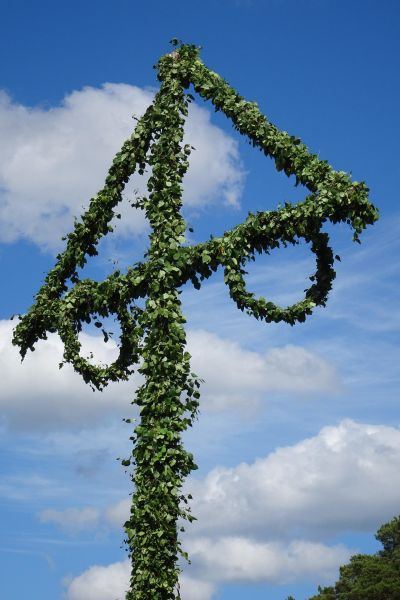
Working days per year 2023
In general, when you talk about the number of working hours per month, you usually say 160, or if you talk about the number of working days per year in 2023, you usually say 250, which is often not quite right. This year (2023), for example, there are between 152 and 184 working hours with an average of 169 hours per month or 253 working days (112 days off!). Here in the table below, you can see exactly how many working days, working hours, number of Saturdays and Sundays and other days off, for example red days, Midsummer's Eve, Christmas Eve and New Year's Eve. On the occasions that a red day coincides with a Saturday or Sunday, it is counted in the Sat & Sun column. We also expect an eight-hour working day. Which days in Sweden count as holidays are regulated in the following Lag (1989: 253) "The Public Holidays Act". The majority are free on the following holidays, even if they happen to coincide with a normal weekday:
- New Year's Eve
- Christmas Eve
- Easter Day and Pentecost
- New Year's Day and Thirteenth Day of Christmas
- May 1
- Christmas Day and Christmas Eve
- Good Friday and Easter Monday
- Ascension Day
- Sweden's National Day
- Midsummer Day
- All Saints Day
- Midsummer Eve
Feel free to check out our calendar here on the right, which contains information such as e.g. name days and a little history about what happened on that particular day.
| Month | Working days | Working hours | Sat & Sun. | Others |
|---|---|---|---|---|
| January | 22 | 176 | 9 | 1 |
| February | 20 | 160 | 8 | 0 |
| March | 23 | 184 | 8 | 0 |
| April | 18 | 144 | 10 | 3 |
| May | 21 | 168 | 8 | 2 |
| June | 20 | 160 | 8 | 2 |
| July | 21 | 168 | 10 | 0 |
| August | 23 | 184 | 8 | 0 |
| September | 21 | 168 | 9 | 0 |
| October | 22 | 176 | 9 | 0 |
| November | 22 | 176 | 8 | 0 |
| December | 19 | 152 | 10 | 2 |
| Total annual working hours | 252 | 2016 | 105 | 10 |
| Average / Month | 21 | 168 | 8.75 | 0.83 |
New Year's Eve
New Year's Eve is celebrated in many countries in different ways
New Year's Eve is a holiday celebrated in many countries around the world. In Sweden, New Year's Eve is celebrated on December 31, and New Year's Day on January 1. New Year's Eve is one of the most popular holidays in Sweden, and it is common for families and friends to gather to celebrate together. There are different traditions for how to celebrate New Year's Eve, but the most common is to watch TV or go out and listen to music. New Year's Eve often ends with launching rockets or fireworks at midnight. This is a tradition that has its origins in Roman times, when braziers were lit in the square to scare away evil spirits. Today, the shooting of rockets and fireworks is merely a symbolic gesture, but it is still a very popular way to ring in the new year.In some countries it is common to dance, eat and drink during the evening
In some countries it is common to dance, eat and drink during the evening. People drink New Year's drinks and eat New Year's food. There is also a New Year's dinner and New Year's supper. All these traditions have their own stories. Dancing, eating and drinking are common New Year's Eve activities in many countries around the world. People drink special New Year's drinks and eat traditional New Year's food. They also eat special New Year's meals such as New Year's dinner and New Year's Eve. In some countries, it is also customary to exchange New Year's gifts with family and friends. Regardless of the specific traditions, the celebration of the New Year is a cherished custom in many cultures.Other countries use New Year's Eve to watch fireworks or light them themselves
In other countries, they prepare for the New Year in different ways. In Japan, people light lanterns and burn firecrackers to scare away evil spirits. In South America it is common to party all night and the fireworks are set off at midnight. In the Philippines, people celebrate by shooting off fireworks, and in Southeast Asia firecrackers were used in the past to scare pests away from strawberries. Today, however, people celebrate more with laser shows and fireworks in the city, instead of firecrackers on the strawberries. The differences between how New Year's Eve is celebrated around the world are great, but all parts of the traditions have their own positive aspects. The laser show in the city is seen by many, the lanterns and firecrackers scare away evil spirits and the fireworks entertain in a happy way. All traditions thus have their own positive aspects that contribute to a pleasant weekend.There is no real rule for how to celebrate New Year's Eve
How do you usually celebrate New Year's Eve? There is no real rule for how to celebrate New Year's Eve. people usually do different things on New Year's Eve. Some people go out and celebrate with friends, while other people stay home and celebrate with their family. Some people eat special dinners, while others just eat the usual. Whatever you do on New Year's Eve, remember that it's a day to celebrate and have fun.Have a nice New Year's Eve!
Have a great New Year's Eve, everyone! I hope you all have a wonderful evening, filled with lots of fun and laughter. Whether you stay up to watch the fireworks or go to the party, I hope you have fun and have a good time. We wish you a happy and successful new year! I wish you all the best in the coming year. Happy New Year!Midsummer Eve

Midsummer Eve: An important tradition in Swedish culture
Midsummer Eve is an important weekend in Sweden and other Nordic countries, which is celebrated on the longest day of the year. It is a time of joy, celebration and the arrival of summer. The weekend has its roots in paganism, when it was celebrated as a holiday in honor of the sun. Today Midsommarafton is one of the most loved weekends in Sweden, and the celebration differs between different parts of the country.
The celebration of Midsummer Eve through the ages: From paganism to modern festivity
Midsummer Eve has its origins in paganism, when it was celebrated as a holiday in honor of the sun. The weekend was a symbol that summer had arrived and that the warmth and light would return. Over time, the celebration of Midsummer Eve has evolved and adapted to the Christian faith, but many of the traditional activities have been preserved.
In modern Sweden, Midsummer Eve is celebrated on June 20-22 every year, and the weekend is one of the most popular weekends in the country. Many people take time off from work and go home to their families to celebrate together. There are also many public celebrations and events that are arranged, such as dancing around the maypole and picnics in nature.
Midsummer Eve has also become an important tourist attraction, with many visitors traveling to Sweden to participate in the celebrations. The weekend has also become a symbol of Swedish culture and tradition worldwide.
How Midsummer's Eve is celebrated in Sweden: A guide to the traditional activities
Midsummer Eve is known for its traditional celebrations, which have been preserved through generations. One of the most iconic activities is the Maypole Dance, where people sing and dance around a pole decorated with flowers and ribbons. The dance symbolizes the sun's path through the sky and is an important part of the celebration.
Another tradition is to pick flowers and make wreaths to wear on the head. Many people choose to go out into nature and pick their own flowers, while others buy ready-made wreaths.
There are also a variety of traditional dishes eaten during Midsummer Eve, such as herring and smorgasbord. Herring is a type of pickled fish that is very popular in Sweden, while smörgåsbord is a meal consisting of a variety of starters, main courses and desserts.
Memories from Midsummer Eve: A personal story about the celebration of the summer holiday
Midsummer Eve is a weekend that has always been special to me. I remember how as a child I always woke up early in the morning to go out and pick flowers with my family. Then we went home and cooked a big dinner together, with all the different kinds of herring and smorgasbords that we loved. After dinner it was time to dance around the Maypole, and I remember how happily I laughed as I twirled around with my friends.
Even though I am no longer a child, Midsummer Eve is still one of my favorite holidays of the year. I always look forward to seeing my family and friends and celebrating together, and enjoying all the wonderful traditions that come with the weekend.

